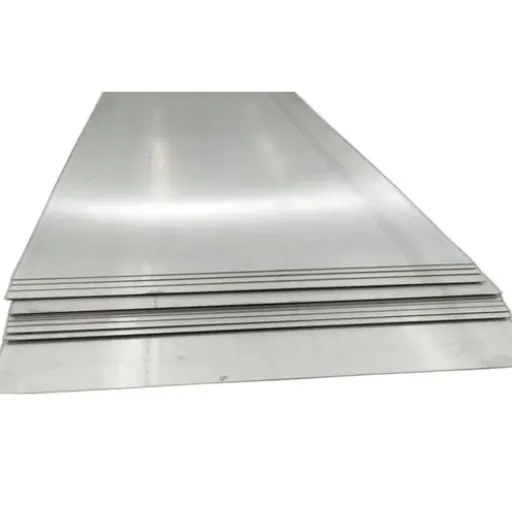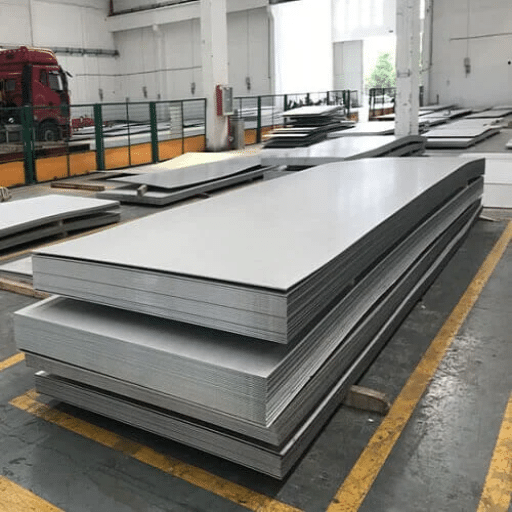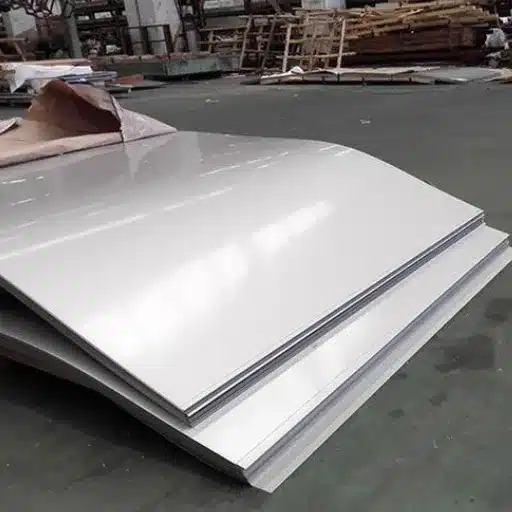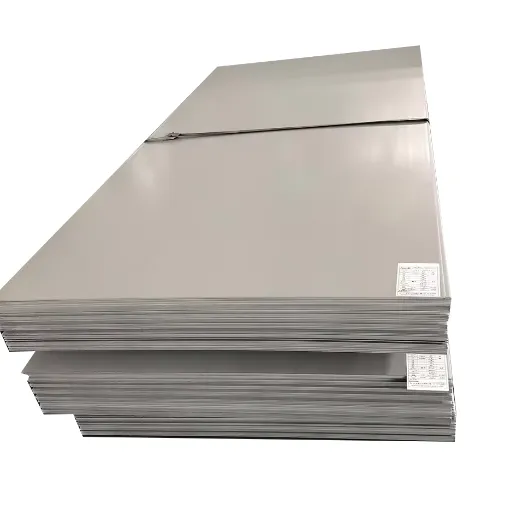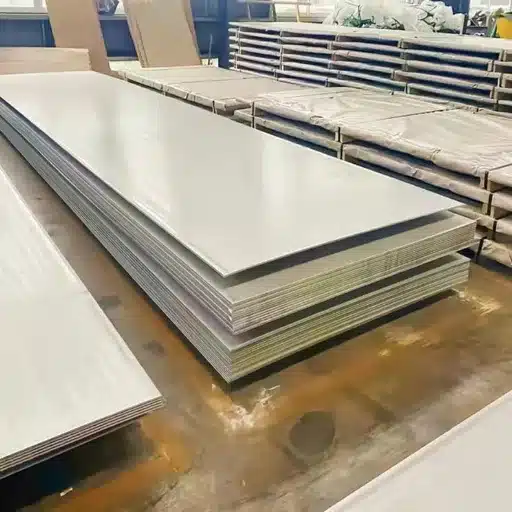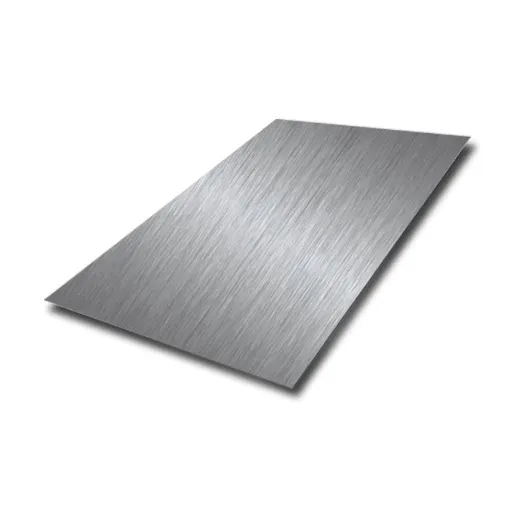Understanding which materials to use in the flow of liquids is a crucial feature present in various sectors, including construction, plumbing, and engineering. Out of many of the pipe systems present among the clients, for example, schedule 40 is applied across the board and is popular owing to its good se of properties, low cost as well as straightforward use sometimes up to intermediate pressure levels. This paper has been designed as an exhaustive narrative covering all aspects of Schedule 40 pipe specifications, including dimensions, materials, advantages, and the various market sectors that utilize it, to save time on site. This article is aimed not only at professionals seeking more in-depth technical data, but also at individuals pondering various alternatives for use in their next project and needing to be abreast of the requisite information.
What is Schedule 40 Pipe?
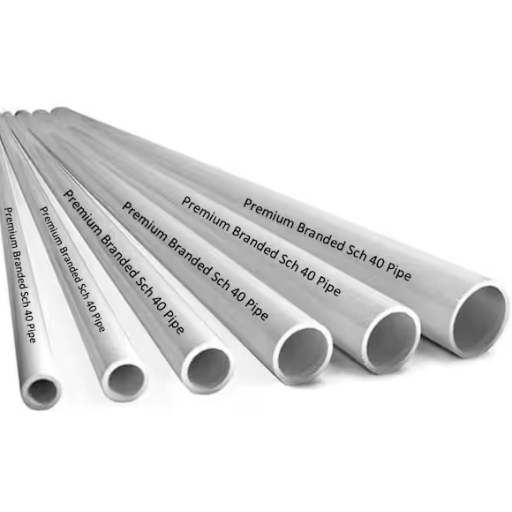
Pipe schedule 40 is a universal categorization of pipes that indicates the pipe’s wall thickness and how much internal pressure is required for the pipe not to burst. It’s often made of materials like PVC, steel, and stainless steel, and is applied domestically as well as industrially. The benefit of this type of pipe lies with its toughness, adaptability, and being in opposition to moderate pressures and temperatures, which allows it to be used in many structures, including plumbing, irrigation, and others. The term “Schedule 40” originates from well-established industry standards, enabling the conformity of all dimensions and regions of operation.
Definition and Overview
Pipe schedule 40 lays down the wall thickness norm that can be correlated with the pressure that the pipe can handle and the maximum general form of the pipe. The nominal size of the pipe and its constituency in terms of material and wall dimensions are determined by the American National Standards Institute (ANSI) and American Society for Testing and Materials (ASTM) for the purpose of compatibility and reliability across different applications. A nominal diameter Schedule 40 polyvinyl chloride (PVC) pipe, for instance, would have an outer diameter of approximately 2.375 inches and a wall thickness of around 0.154 inches, making it suitable for moderate pressure.
It is worth mentioning that Schedule 40 can be widely used. As the corrosion resistance and light weight of PVC pipes are praised, tensile strength and temperature resistance of metal and high tensile steel pipes are provided. These are the dimensions of the Schedule 40 pipes that assist in the design of water supply systems, chemical tanks, or even services like sleeving of other services within a cavity. As soon as the data generally affecting water, with its installation of pipes and dimensions especially, falls in which the amount of the liquid is very critical, the pipes and valleys which should be used for work give compatibility and use specifications.
Significance in Various Industries
Schedule 40 provides substantial advantages across several different industries due to characteristics such as steady performance, great durability, and the range of materials available. In the field of construction t these thin walled pipes are often used in actually supporting structures and frame even with the external forces resulting from their loads their strength and resistance render them very stable for such applications. However, in sectors such as plumbing and water management, Schedule 40 is generally used in designing systems for the efficient transportation of water without being constricted to varying pressure levels.
The chemical as well as the petrochemical industry also makes use of Schedule 40 pipes for the safe movement of both liquids and gases. These substances can be very corrosive, especially in an acidic environment, and the construction of these pipes in ideal materials like stainless steel, which has that resistance, help reduce such risks. Additionally, in agriculture, these pipes assist in irrigations by releasing water as needed over vast arable lands. The use of such pipes in typical applications of industrial machinery veils their adaptability as it provides a reliable fluid regulation even under pressure or temperature conditions.
Common Uses of Schedule 40 Pipe
- Plumbing Systems
It is necessary to use Schedule 40 pipe in the construction of single-family homes, business premises, and industrial buildings. Therefore, its durable structure ensures no clogging often associated with interchangeable pipes. Likewise, it is essential and safe to use schedule 40 pipe in the transportation of liquid, be it potable water, sewage or any other fluid, which should be hanging. It is very good for use with moderate-pressure/temperature systems and guarantees reliable and safe performance over time.
- Irrigation and Agriculture
This type of pipe is quite often used for drip irrigation systems playing a major role in the distribution of water in agriculture. In particular, this feature, together with the mostly constant diameter interior walls free of congestion, and good anti-corrosive properties, makes it suitable for watering large areas of farming. More importantly, research has indicated that PVC Schedule 40 pipe, which is one of the most popular options, can still function for more than 50 years if it is handled well in the irrigation system.
- Gas and Fluid Transportation
On the downside, Schedule 40 pipe is able to convey natural gas, fuels, and other aggressive industrial oils conveniently due to its ability to deal with high pressures. The steel version of the pipes meets the rated working pressures for these steel Schedule 40 pipes used in gas systems.
- HVAC Systems
Heating, Ventilation, and Air Conditioning (HVAC) systems may also use Schedule 40 piping sizes in certain applications such as refrigerator lines, condensation pipes, and heat piping. The soundness of the Schedule 40 constructions with respect to steel and PVC materials prevents the wastage of resources in the HVAC. This goes for any engineering that may occur involving Schedule 40 piping.
- Structural Applications
Schedule 40 thin-wall tube is incorporated in architectural projects like making channels, grilles, balustrades and supporting members. In particular, the excellent wear resistance, tensile strength and flexural strength of the pipe enable it to carry loads effectively in the systems. For example, pipes such as galvanized steel schedule 40 pipes can run in environments where they can corrode because they do not change their appearance when subjected to rust.
Materials Used for Schedule 40 Pipe

- PVC (Polyvinyl Chloride)
PVC separate 40 pipes are lightweight, generally do not corrode, and are used in piping for hot and cold water, chilled water, and irrigation systems. Suitable for water and waterborne non-corrosive water applications due to their adhesion to these materials.
- Steel
Steel Schedule 40 pipes enhance the tensile strength; therefore, they are suitable for use in structures and high-pressure mechanical systems. Steel pipes made of galvanized metal, on the other hand, last even longer and better in the presence of outdoors or industrial settings due to steel’s protective covering.
- Stainless Steel
Schedule 40 pipes, a type of polished steel pipe, are very good for environmental resistance and are commonly used in building systems, water processing systems, and often as well in manufacturing since Schedule 40 polished steel pipes are not prone to contaminating the environment and they also last long.
- CPVC (Chlorinated PVC)
CPVC Schedule 40 pipes are designed to maintain water temperatures higher than the PVC, which is perfect for applications that require hot water.
PVC Schedule 40 Pipe
They are seldom heard of, simply because PVC (Polyvinyl Chloride) schedule 40 pipes are among the most flexible as well as most employed piping materials in systems meant for homes, commercial, and small-scale industries. These are pipes made of a composite material that is both light and very strong, and thus comprises resistance to attack by chemicals, corrosion, or abrasion, which makes it ideal for use over a longer time. As the name suggests, they find most use in plumbing, sprinkler, and excavation systems since they can effectively resist cold water flow and low pressure. These pipes have a pressure rating of between 120 PSI and 450 PSI, depending on the pipe diameter and the temperature of the medium, with the focus on a safety margin for most construction and industrial competencies.
Steel Pipe Schedule 40
It is just like any other piping. Steel Pipe Schedule 40 is one of the most popular specs that gets used in piping systems because it provides an optimal mix of durability, strength, and ease of fitting. The thickness of the walls of Schedule 40 steel pipes varies from pipe to pipe, which ensures that different pipe sizes are all able to handle the pressures on them. For instance, in the relevant industries, a 1-inch Schedule 40 steel line will generally have a 0.133-inch nominal wall thickness, which works in all situations of increased pressure, like the building and plumbing industries.
Comparing Carbon Steel and Other Materials
|
Parameter |
Carbon Steel |
Stainless Steel |
Aluminum |
Plastic |
Copper |
|---|---|---|---|---|---|
|
Corrosion Resistance |
Low without coatings |
High |
Moderate |
Excellent |
High |
|
Strength |
High |
Moderate to High |
Low to Moderate |
Low |
Moderate |
|
Weight |
Heavy |
Moderate |
Lightweight |
Lightweight |
Moderate |
|
Thermal Conductivity |
Moderate |
Moderate |
High |
Low |
Very High |
|
Cost |
Low |
Moderate |
Moderate to High |
Low |
High |
|
Ease of Machining |
High |
High |
Moderate |
Low |
High |
|
Durability |
Very High |
High |
Moderate |
Low |
High |
|
Environmental Impact |
Moderate |
Low |
Low |
High |
Moderate |
|
Uses |
Construction, pipes, machines |
Kitchenware, medical, aerospace |
Automotive, aerospace, packaging |
Piping, insulation |
Electrical, plumbing |
Advantages of Schedule 40 Pipe
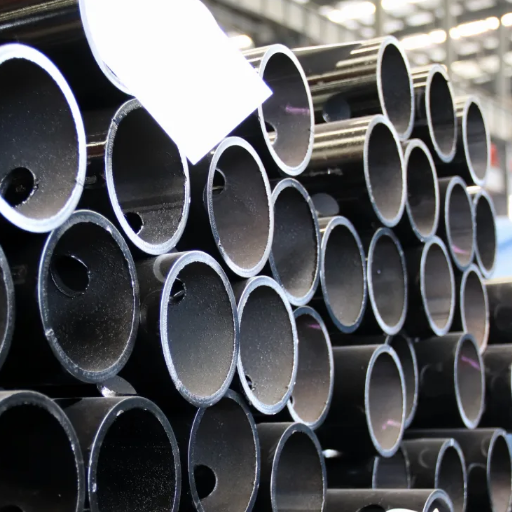
The utility for which Schedule 40 polished steel pipe became a household product is that the pipe is designed to offer the best quality and durability, and the cost effectiveness attached to it. These are the few primary features with respect to this pipe:
- High Strength and Durability: Being quite strong and durable makes schedule 40 pipe safe to use for a long time with no stress because of internal pressure and other pressure that may causes leakage.
- Wide Availability: Commonly used in plumbing, irrigation, and industrial systems, Schedule 40 pipe is readily available in various materials such as PVC, steel, and CPVC.
- Ease of Installation: It is but natural that pipes made with PVC or CPVC are preferred outside wood or concrete because they are lighter in weight.
- Corrosion Resistance: Being such inert materials, nonmetallic Schedule 40 pipes like PVC and CPVC provide necessary technologies that counter the problems of rusting, chemical attacks, among others, and improve their lifespan.
- Cost-Effective: Where a user wants a pipeline that is not effective yet cheap enough, the best candidate is usually the Schedule 40 pipe schedule. This is why it is used both in domestic and industrial applications.
It is because of these and many other factors that such piping material is considered usefully versatile.
Durability and Versatility
The robustness of Schedule 40 pipes can be attributed to their construction and the cost-efficient material assortment, such as PVC and CPVC. The materials present great resistance to different factors such as high pressure, shocks, and high temperatures, among other environmental stresses. They also resist rusting and are immune to other external agents that may cause chemical attack which makes them particularly suited for installations in wastewater treatment and chemical processing plants.
Another distinctive feature of Schedule 40 pipes is their suitability for various applications, as they have been widely accepted. From Plumbing in the home or commercial buildings, all these will be using these pipes. The systems modified for accommodating the Schedule 40 pipes can be very complicated, but due to the low weight of the materials, it is easy to do, and the work costs and installation time are short too. Thanks to advanced pipe manufacturing techniques, these pipes are also suitable even for politically sensitive locations and aggressive service conditions, while their effectiveness remains unchanged.
Cost-Effectiveness
Comparison with Schedule 80 and SDR Piping
|
Key Point |
Schedule 80 |
SDR Piping |
|---|---|---|
|
Wall Thickness |
Thicker walls for high pressure |
Varies with size, thinner walls |
|
Pressure Rating |
High pressure resistance |
Lower pressure rating |
|
Weight |
Heavier than SDR piping |
Lighter and easier to handle |
|
Cost |
Generally more expensive |
More cost-effective |
|
Flexibility |
Less flexible, rigid |
Greater flexibility |
|
Application |
Industrial and high-pressure systems |
Municipal and low-pressure systems |
|
Installation Complexity |
Requires more effort to handle |
Simplifies installation process |
|
Durability |
Highly durable for harsh conditions |
Durable but less than Schedule 80 |
|
Material Efficiency |
Uses more material due to thickness |
Material-efficient design |
|
Thermal Resistance |
Higher temperature tolerance |
Lower temperature tolerance |
Installation Tips for Schedule 40 Pipe
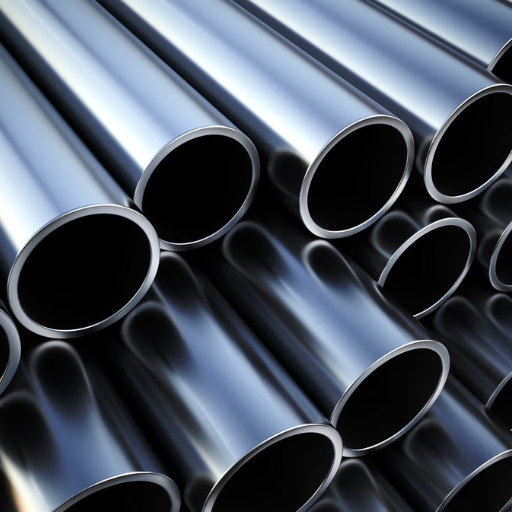
- Proper Cutting Techniques: Make sure you cut straight using the right PVC pipe cutter or saw instead of using a hacksaw. Do not make some ragged edges while cutting the pipe to avoid the awkward position of the joining.
- Deburring and Smoothing: After this is done, for the burrs and burrs over the cut edges mechanically deburred externally with a deburring tool or Extra fine sandpaper. It also ensures that alignment issues wouldn’t present problem.
- Cleaning the Pipe and Fittings: To ensure the best bonding, both the pipe ends as well as fittings are properly and thoroughly washed off dirt, dust, oil, and contaminants with the help of a PVC cleaner.
- Applying Primer and Cement: First of all, the PVC material may first be softened with a PVC primer then cements applied on both planes. The cure time of most solvent-based primers is decreased and the discussion is aimed at emphasizing on rapid setting.
- Joint Alignment: Immediately, after joining, the pipe and the fitting should be properly aligned and a pressure should be applied evenly. This alignment is held for a minimum of 30 seconds to eliminate the possibility of any slippage occurring.
- Curing Time: It is provided that the apertured joint should be allowed to cure in position for the period recommended by the adhesive manufacturer, before load application or operation.
Best Practices for Successful Installation
- Thorough Surface Preparation: Ensure that all pipe surfaces are clean and free of debris, oil, or moisture before applying adhesives. Contaminants can weaken the bond, leading to potential leaks or failures over time. Use a clean, lint-free cloth to wipe the surfaces where the connection will be made.
- Proper Sizing and Inspection: The filength is within the sizes and textures that can commonly withstand the constrains heat can possibly exert for its usage such as the pipe and fittings have to be within the scope of the project design. Whenever the system includes fittings, check if there are any visible cracks or damage on the pipes or in the fittings, this damage can affect the strength of the connection.
- Temperature Considerations: The glue and inside the pipe or close to the glue should be applied in given manufacture’s installation instructions, as any excess heating will affect the curing of adhesives and affect the final integrity of the joint.
- Adhesive Application Technique: When applying PVC Primer and cement, be sure to put all of the applicator to the desired surface without dipping too much into the pipe preventing a thin or thick film inside. Spreading the glue in circular pattern helps achieve the best results.
- Controlled Assembly Pressure: Handle the piping or fitting with care because pushing it to its place may only rest inside and or shooting the glue out or misallocating the joints. When attaching any section, maintain a grip without pulling, letting it run until proper adhesion phase arises.
- Recommended Curing Time Compliance: Payments are specified in table 3 of this work joine during use systems, which exhaustive capacity and joint strength may lead to joint behavior in the event of curing system was not complete.
Tools Required for Installation
The above-mentioned and enumerated tools and equipment are essential in efficient and precise installation of pipe joints if the process is to be successful:
- Pipe Cutter or Hacksaw – Will be used for getting rid of the burrs and also for achieving neat and sharp cuts on the PVC water pipes which in crops up a number of the joints’ parts allowing a nice connection with minimal leaks.
- Deburring Tool or Reamer – In most cases, burrs need to be carefully removed as well as the inner and outer edges of the iron holes cleaned to avoid displacement of some seals and yes joints on the pipeline.
- Measuring Tape or Ruler – Practical assistance when marking the length of a pipe allows circulation during construction of welded structures, which leads to the ball in a contract less misfit.
- Marker or Pencil – It is used to create lines and points of joint cuts for appropriate fitting. It helps to ensure the perfect fitting of the structure.
- Solvent Cement Applicator – A brush or swab that can apply solvent cement in an even manner, which is very critical for background utility, especially in the case of pipe and fitting bond establishment.
- Personal Protective Equipment (PPE) – While in the midst of polyvinyl chloride-solvent application, specifically, while using gloves and safety goggles, the said chemical exposure will not be felt by the installer or be exposed whenever uneventful accidents occur.
- Level or Alignment Tool – Adjusts the line of pipes and fixtures along the axis to ensure the proper installation accuracy and the prevention of errors due to installation.
Maintenance of Schedule 40 Pipe
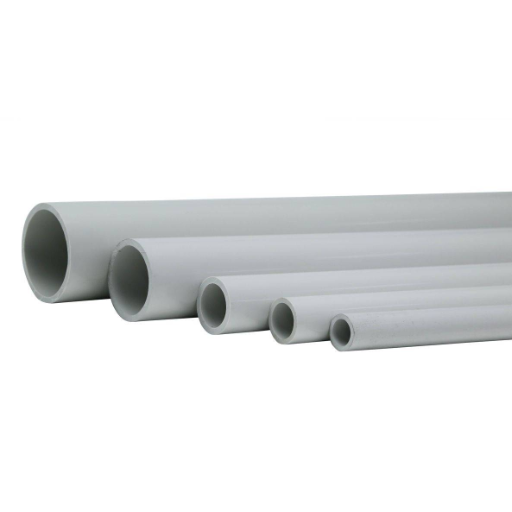
Diligent upkeep of Schedule 40 pipe is imperative to extend its life span and make it operate at peak efficiency. Check the pipe at regular intervals for any signs of corrosion, leakage, or damage, especially in the case of joints and connections. Blockages in the pipe should be purged by freeing it from the residue that lies within the pipe. Cement concrete pipe needs to be monitored by observing pipe installation and checking the working pressures to avoid the pipe becoming strained. The joints and supports should be carefully checked as poorly attached components can undergo slight movements, which could lead to leakage over time. Arrange thermal insulation or appropriate shading for the pipework so that its component does not come under long-term weather exposure. The tubing care and quality of fittings should be up to the mark and as recommended by the manufacturer.
Proper Care and Maintenance Practices
Proper system care and maintenance practices are some of the critical elements of an effective operating design, for the system to perform well and last for a given period. These practices can come in the form of regular checks on every part of the system to identify any sign of wear, corrosion or damage and correct it in good time. Such identified malfunctions ought to be tackled immediately; this is especially important in instances of applications handled under high-pressure conditions and/or those with elevated temperatures.
Techniques that do not involve any physical contact, like ultrasonic and thermal imaging, are used for fault detection, where they are able to identify things like microcracks, glaring weaknesses, and even impediments to the functioning of the system. Cleaning the system is a regular preventive measure to get rid of sediments, deposits, and biofilm that may impede the smooth flow of fluid or decrease the effectiveness of the system. It is also important to use the right chemicals as prescribed but forbid chemical incompatibility per the equipment materials usage manual.
For machines that consist of parts that are in motion or rotary, always ensure that there are appropriate and adequate provisions in their design or application regarding lubrication. Too much or too little lubrication will result in malfunction of the equipment, which is undesirable in most cases since it consumes a lot of time and money for maintenance work. Measures such as the application of anticipatory technologies that involves the use of vibration diagnostics and other software and systems for observing machines can help avert possible machinery damages before pacing these frequent changes and disturbances.
Also, there should be a current maintenance history which illustrates every job undertaken, worn out parts, and check systems. This entire information helps to understand how the system has worked, which is crucial when compliance and every mode of operation are in question, while making it easier for whoever comes for repairs. Good maintenance habits are needed not just because they save money but also for safety and productivity purposes.
Extending the Lifespan of Schedule 40 Pipes
Reference Sources
1. What is Schedule 40 Pipe? Dimensions & Sizes
- Summary: This article explains the standardized wall thickness of Schedule 40 pipes, which balances strength and affordability. It highlights the ANSI pipe schedule system, which ensures consistency across manufacturers. The wall thickness varies by nominal size, making Schedule 40 suitable for water, gas transport, and structural projects. Comparisons with Schedule 80 pipes (thicker walls for higher pressure) are also provided.
2. Schedule 40 Pipe – an Overview (ScienceDirect)
- Summary: This resource provides an engineering-focused overview of Schedule 40 pipes, detailing their wall thickness, inside diameter, and material properties. It discusses the relationship between wall thickness and pressure resistance, emphasizing the importance of material selection for specific applications. The article also compares Schedule 40 with other pipe schedules like Schedule 80 and 160.
- Summary: This comprehensive study by Utah State University examines the durability and longevity of PVC pipes, including Schedule 40. It highlights that PVC pipes can exceed 100 years of service life under normal conditions. The report emphasizes the importance of proper installation and maintenance, showcasing PVC’s resistance to corrosion and mechanical degradation. It also includes lifecycle cost analysis, demonstrating PVC’s affordability and sustainability compared to other materials.
Frequently Asked Questions (FAQs)
Q: What are the dimensions of schedule 40 steel pipe?
A: Schedule 40 steel pipe dimensions vary based on the nominal pipe size (NPS). Common sizes range from 1/2 inch to 24 inches in diameter. The wall thickness also varies; for example, a 2-inch NPS schedule 40 pipe typically has a wall thickness of 0.154 inches. It’s essential to refer to a detailed chart of pipe dimensions to get precise measurements. The inside diameter will also differ slightly based on the nominal size, which is crucial for applications in plumbing and industrial piping.
Q: What is the weight of schedule 40 steel pipes?
A: The weight of schedule 40 steel pipes is determined by their size and wall thickness. For instance, a 2-inch schedule 40 pipe weighs approximately 2.27 lbs per foot. The weight can be critical for transport and installation, particularly in heavy-duty applications like oil and gas. When considering options, it’s also beneficial to compare the weight of schedule 40 steel to other grades and schedules, such as schedule 80, to determine which best suits your project needs.
Q: What are the applications of Sch 40 steel pipe?
A: Sch 40 steel pipe is widely used in various applications due to its durability and strength. It’s commonly utilized in water and gas lines, making it ideal for residential plumbing and industrial systems. Additionally, the oil and gas industry often employs sch 40 pipes for transporting fluids under pressure. Other applications include HVAC systems and structural supports. The versatility of schedule 40 makes it a preferred choice among manufacturers and suppliers for different projects.
Q: What is the price of schedule 40 pipe per foot?
A: The price of schedule 40 pipe per foot can vary significantly based on the supplier and market conditions. As of now, prices typically range from $1 to $5 per foot, depending on the size and grade. For example, ASTM A53 grade B sch 40 pipes may be priced differently compared to standard carbon steel pipe. It’s advisable to check with local hardware stores like Home Depot or specialized suppliers for the most accurate pricing. Bulk purchasing can often result in discounts, making it more economical for larger projects.
Q: What is the chemical composition of schedule 40 steel?
A: The chemical composition of schedule 40 steel primarily consists of carbon, manganese, and small amounts of other elements like zinc. For instance, carbon content typically ranges from 0.26% to 0.29% for ASTM A53 grade B materials. Understanding the composition is crucial for determining the pipe’s strength and suitability for specific applications, especially in high-temperature or pressure environments. Additionally, different grades of schedule 40 steel may have varying properties that affect their performance in industrial settings.

